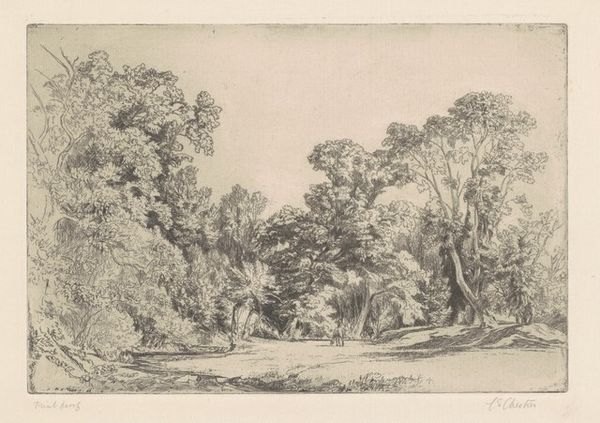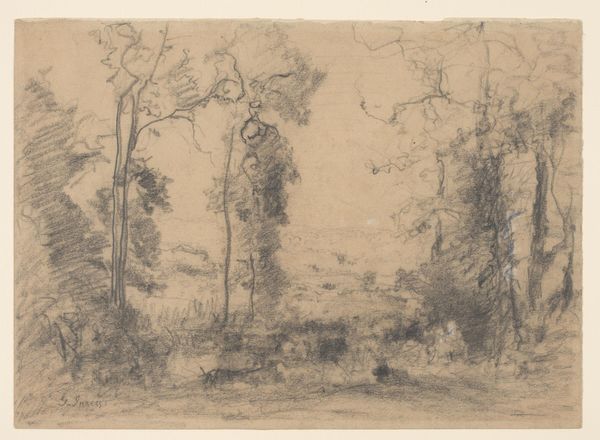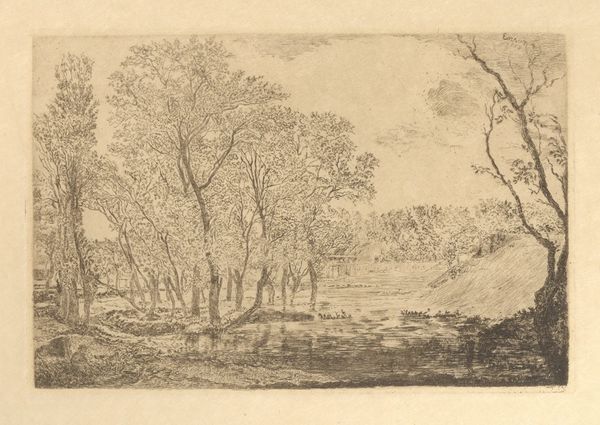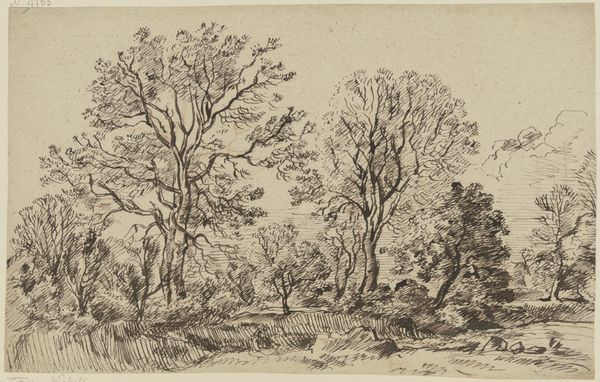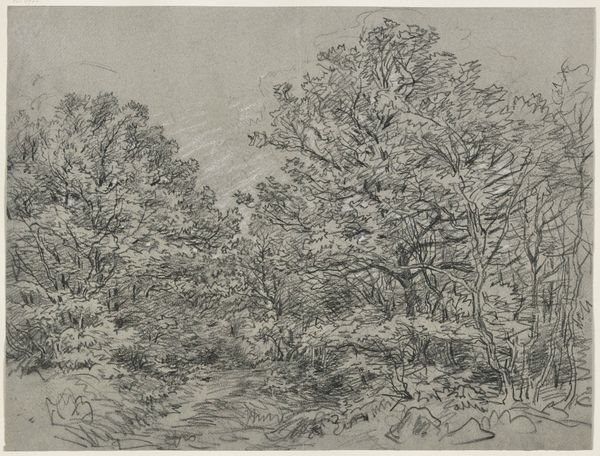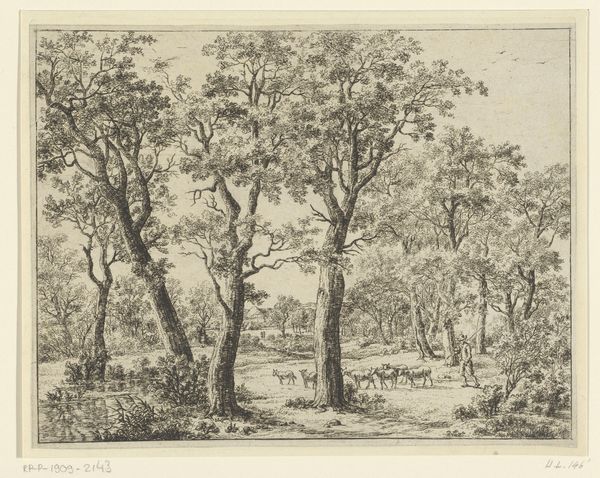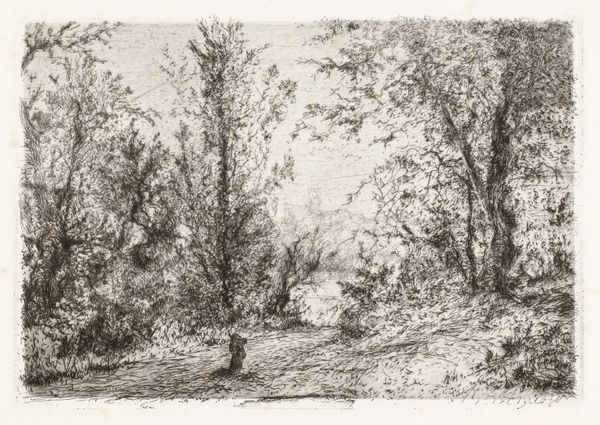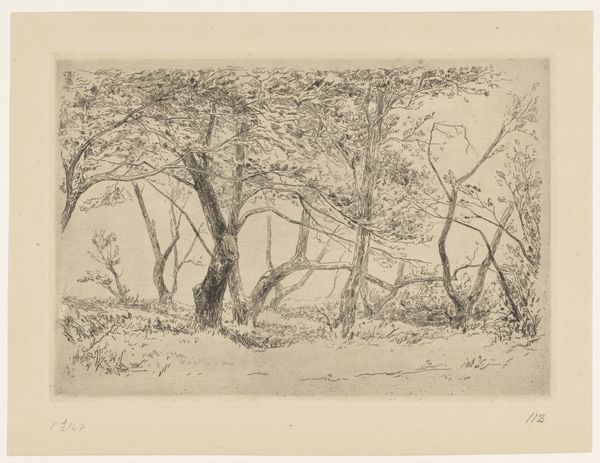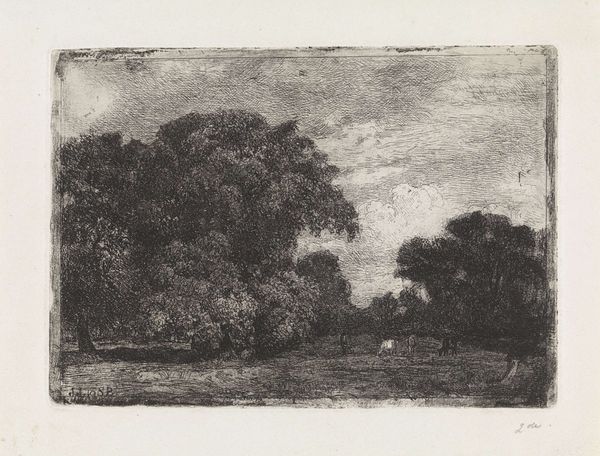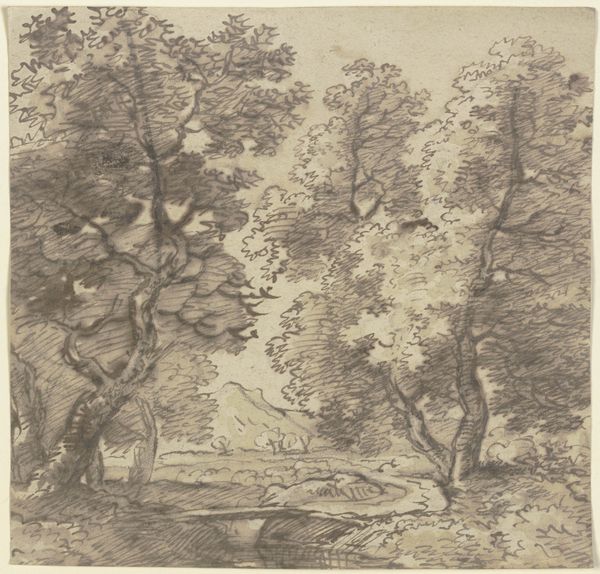
print, etching
# print
#
etching
#
landscape
#
realism
Dimensions: plate: 60.5 x 91.1 cm (23 13/16 x 35 7/8 in.) sheet (irregular): 63.7 x 98 cm (25 1/16 x 38 9/16 in.)
Copyright: National Gallery of Art: CC0 1.0
Curator: What catches your eye about this artwork? It's a 1957 print, "Spring" by Moishe Smith. To me, it’s got this ghostly quality, especially since he uses an etching technique. Editor: Hmm, "ghostly" is interesting. I'd say serene, with an undercurrent of something melancholic, maybe? The whole composition seems to focus on bare trees against a pale, indistinct sky. Curator: Exactly. Those stark, leafless branches give the scene such a powerful emotional charge. Look at the lines; you have a strong sense of structure. Smith uses hatching and cross-hatching to define the form, which I love! Editor: You can certainly feel the artist exploring contrasts here. Light against shadow, texture against empty space... The medium lends itself well to the landscape. It captures that transitional moment of late winter to early spring before everything explodes into full bloom. Curator: Oh, I agree completely! The landscape isn't just represented; it’s felt. Each stroke carries weight, revealing the artist’s keen eye and hand. But why choose to leave some areas seemingly unfinished or faintly etched? Editor: Perhaps to accentuate a sense of transience or latent potential. A formalist take may describe those bare trees as 'signifiers'— skeletal frameworks that denote a world still in waiting, soon to come to life! It draws our eye from foreground to horizon and uses tonal gradations. Curator: Fascinating point! He doesn't let go of details entirely either; that adds an earthy grounding, don't you think? Overall the combination evokes for me a sort of patient expectation, doesn’t it? Editor: Yes, the image asks you to spend time and return to discover hidden moments again. It rewards observation and reminds us that growth often starts in a quieter season. Curator: Beautifully put! It makes you wonder, doesn't it, about how personal observation always influences art and invites viewers to look closely for longer. Editor: Indeed!
Comments
No comments
Be the first to comment and join the conversation on the ultimate creative platform.
